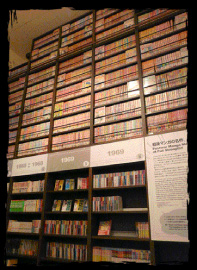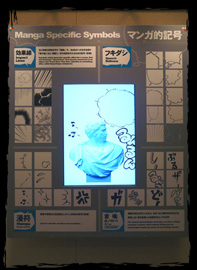 |
 |
A culture respected worldwide |
 |
 |
The Chojyu Jinbutsu Giga (Animal Caricatures) is commonly regarded as the oldest manga in Japan. It features animals such as rabbits and frogs given human characteristics and engaged in daily activities - it is said to be a satire of life and society in the Heian and Kamakura periods. The effect lines and technique used to portray the running animals are very similar to those used in modern manga, so the great masters of the past, like Tezuka Osamu, acknowledge it as the root of the manga genre.
At present, there are a variety of manga categories, including those aimed at young boys, young girls, and music or sport fans. The reason that the medium and culture of manga has developed to such a great degree in Japan lies in the creativity and efforts of the past masters of the art in the development of expressive techniques. For example, one of the techniques marked by manga is the use of "komawari." "Komawari" is the use of a framework to direct the flow of a story. As a manga-like expression, a character’s dialogue is enclosed in speech bubbles coming from the mouth of the character speaking, while the sound effects and feelings of the character are expressed in textual form as sound symbols or visual signs. For example, if the character is saying, "That makes me mad!" drawing lines from the head makes the head look like it is steaming, effectively expressing the heated emotion.
At the Kyoto International Manga Museum, in addition to the manga available to read, there is also a display showing the changes in the genre over the years. On the second floor, there are eleven corners featuring displays showing how manga are made, famous manga character goods, and manga that have been exported to foreign countries.
Manga is one aspect of culture that Japan can take pride in today. We might go as far as to say that no country can compete with Japan in terms of the quality of manga. While this branch of culture is so close at hand, many people in Japan do not realize it is something the country should be proud of - so why not come to the museum and immerse yourself in the culture of manga this autumn? |
|
 |
 |
| Mangas reaching to the ceiling |
|
 |
 |
| A display of manga-like expressions |
|
|

